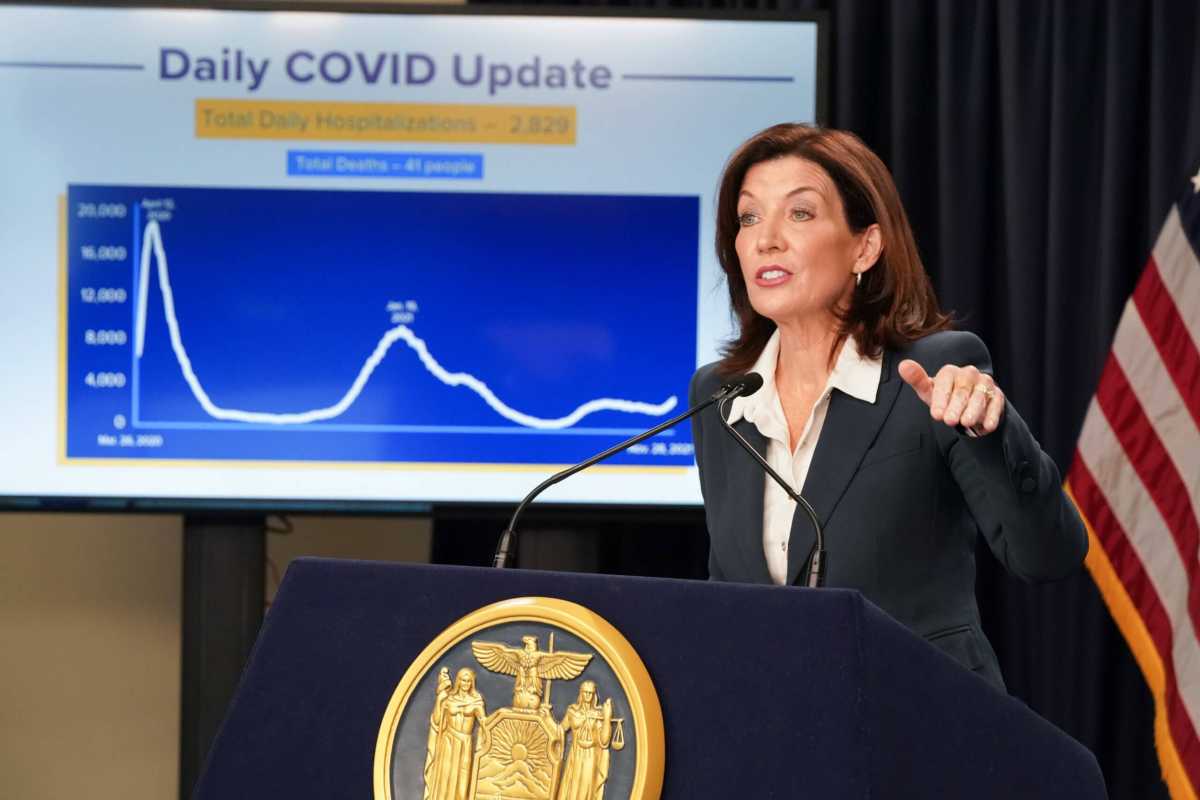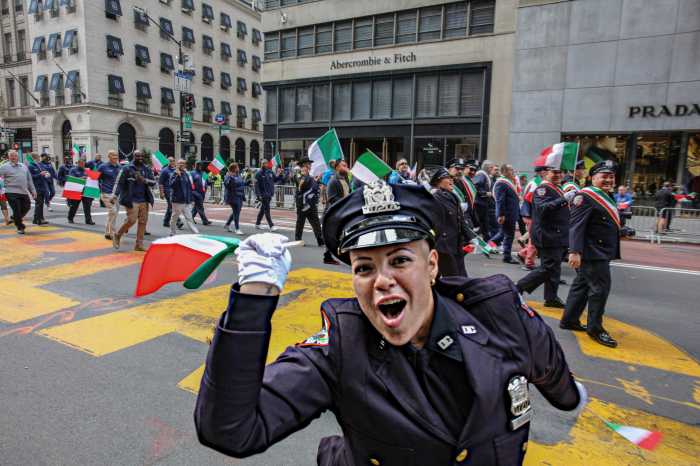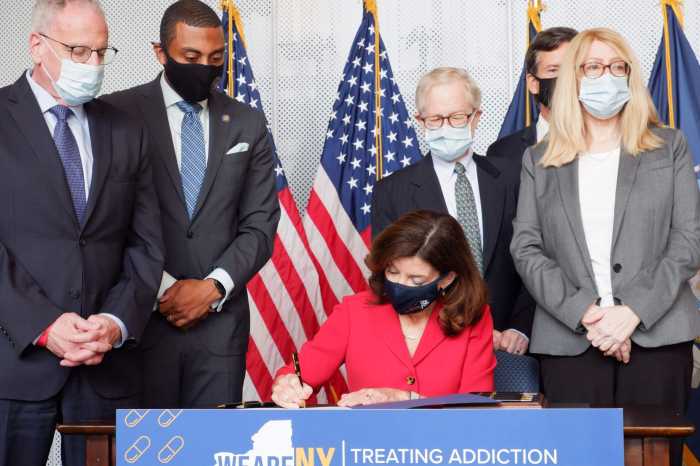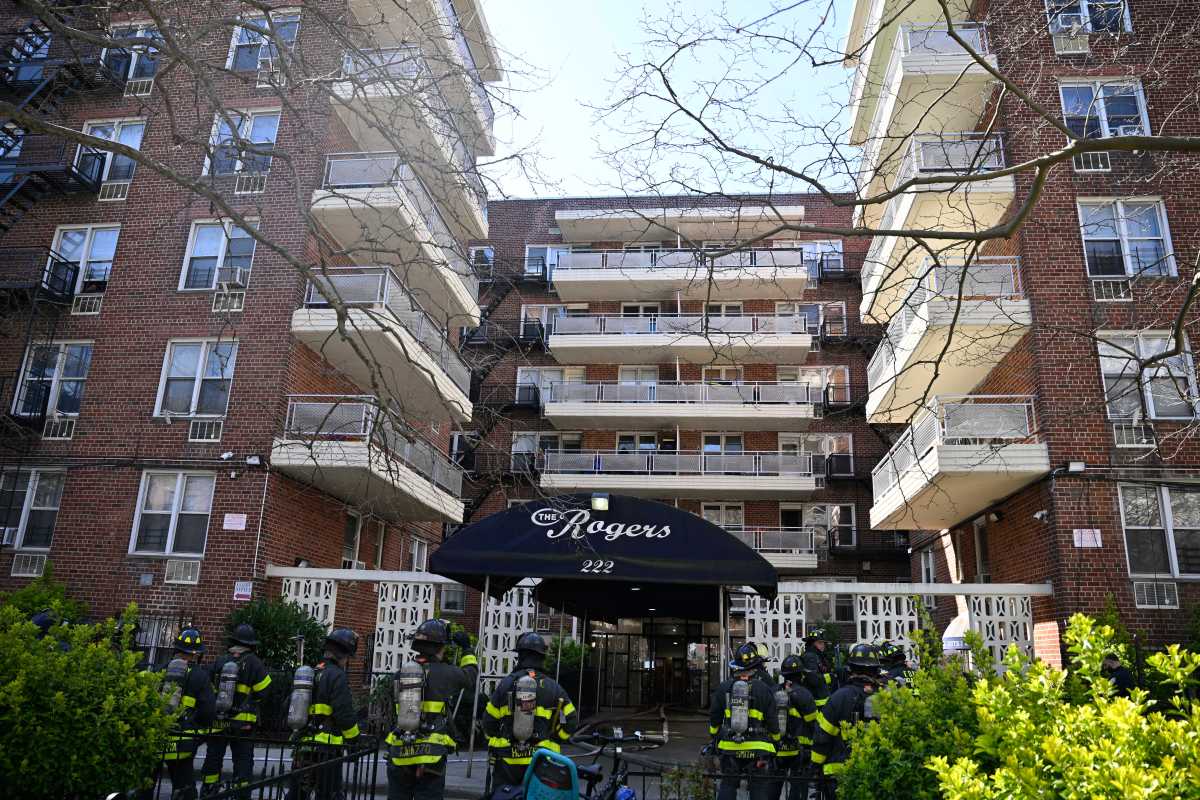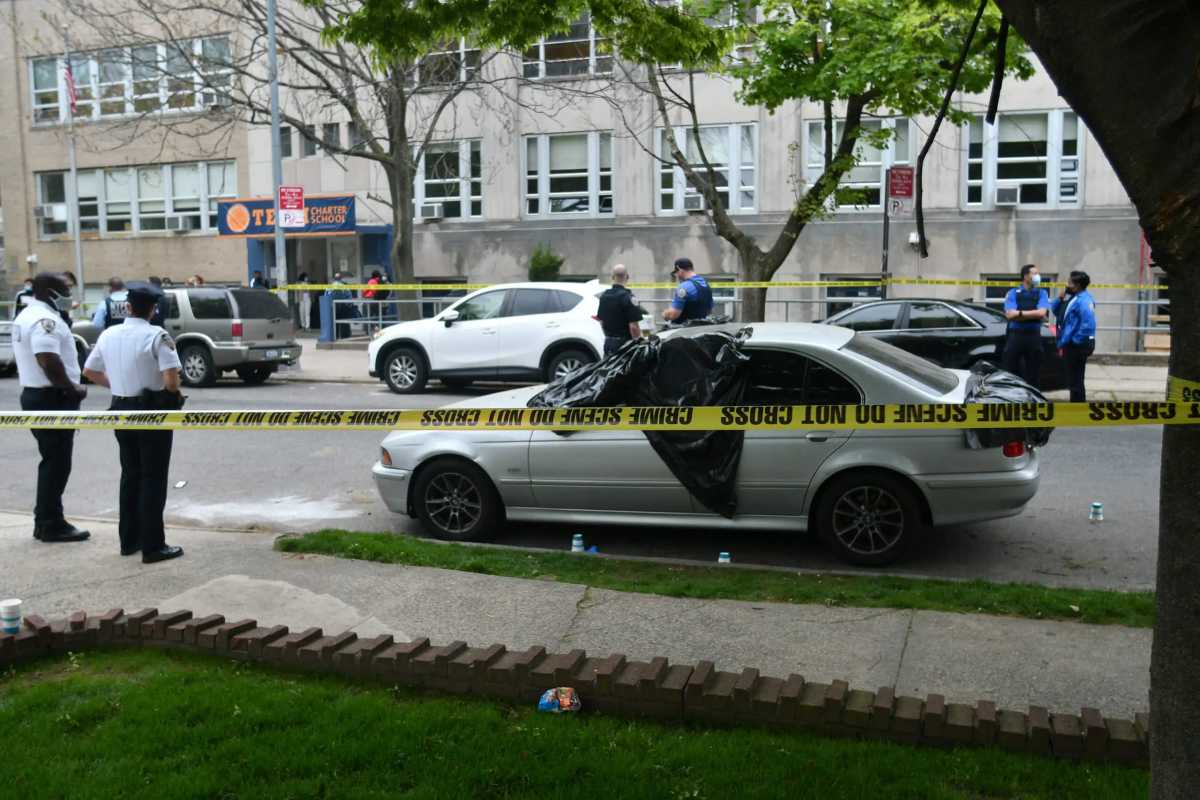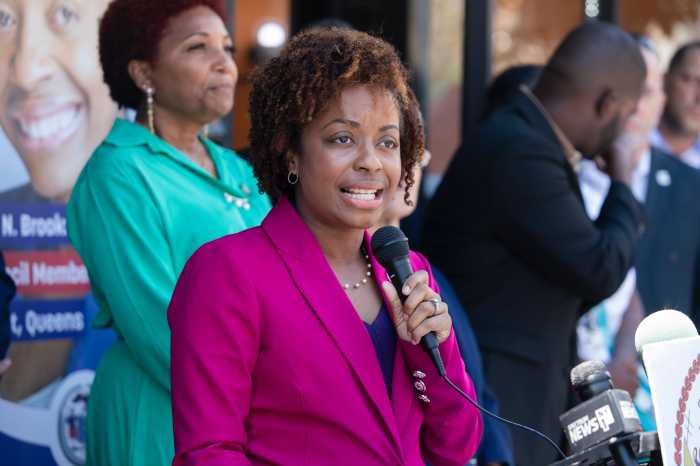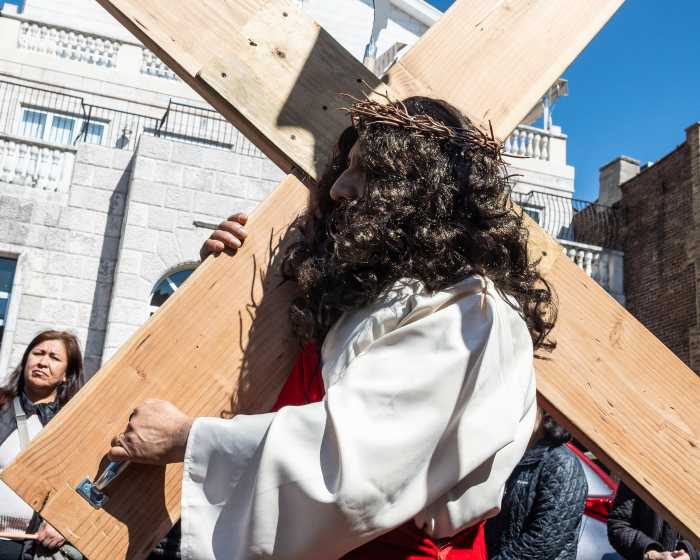Amid a growing hospital capacity shortage upstate, Governor Kathy Hochul announced Monday that she will deploy the National Guard to help staff nursing homes to free up more space at health care facilities.
Supporting the longterm care centers will allow the hospitals to discharge more patients ahead of a likely winter surge in COVID-19 cases, Hochul said at a pandemic briefing at her Manhattan office on Monday, Nov. 29.
“This is what keeps me up at night, making sure that our hospitals have the capacity to handle the influx of patients. Whether it’s from COVID or otherwise,” Hochul said.
The governor said she wants to train more National Guard members as EMTs starting in January and plans to use powers under her Friday executive order to further expand hospital capacity.
“We have surveyed our National Guard resources, we know that there are numbers who have EMT training or health care backgrounds, and we can deploy them in a targeted way to the health care facilities that nursing homes or long term health care facilities where they’re having a shortage,” she said. “One of the reasons we have additional individuals still in hospitals who are nonCOVID, are ready to be discharged, is that the nursing homes don’t have enough staff to take them,” Hochul said.
Hospitals in upstate regions are at much lower capacity than in New York City and surrounding areas, with state statistics showing about a 4% decrease overall since early August, or about 1,580 beds.
More than two-thirds, or 70%, of that loss is upstate, with that region losing 10% capacity versus just 2% downstate, according to Hochul.
“Not that I’m trying to create an upstate downstate divide in our state — I don’t believe in that — but just looking at the numbers, these are what the numbers we’re seeing and they’re very, very troubling,” she said.
Central New York currently has the lowest capacity at 8%, followed by 9% in the Finger Lakes, 10% in the Capital Region, and 11% in Western New York.
On the high end, Mid-Hudson, which includes suburban counties just north of New York City, has the highest capacity at 31%, followed by the Five Boroughs at 28%, and Long Island at 27%.
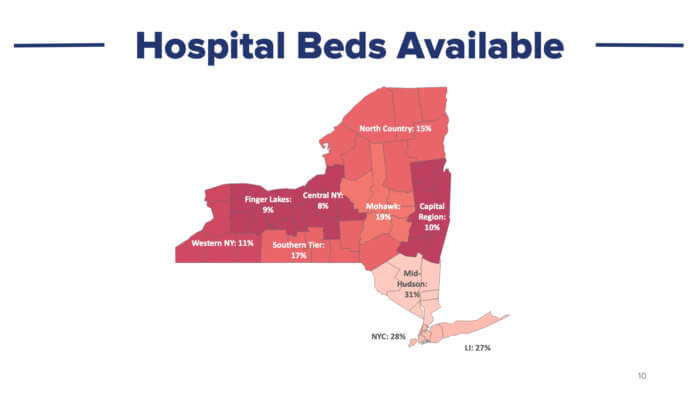
Some of the shortages are due to healthcare workers refusing to get vaccinated as they are required to under the state’s mandate, but Hochul said the low vaccination rates in those areas was a more important factor.
“There is a somewhat of a correlation, it is not the sole reason by any stretch of the imagination,” she said. “There’s a closer correlation to hospital capacity and vaccination rates in areas.”
The upstate regions do have vaccination rates below the state’s average of 74% for people who got at least one shot, like Central New York at 68.7%, Finger Lakes at 67.9%, and Western New York at 66.4%.
Western New York and Finger Lakes also have the highest positivity rates in the state at 10.3% and 9.61%, and Erie County in the former region reinstituted a mask mandate last week due to the bump in cases.
The governor added that she will not roll back the mandate and that she’s working to fill shortages with workers, including from outside the country.
“Yes, there has been an impact. We have lost some workers. That is regrettable. We encourage them to get vaccine and come back to the health care family,” she said. “But I cannot I can’t change a policy because of some individuals who made that personal decision.”
On Friday Hochul signed an executive order allowing hospitals to limit non-essential procedures and expand purchasing of supplies starting Dec. 3.
“We’re working very hard to backfill and that includes — and I’ll be announcing more on this later — our effort to bring in more foreign workers, working with the White House I’m having conversations with, to bring in more nurses who might be available globally,” Hochul added. “The executive order allows me to use more creative means to find workers to come to our state and backfill, again, talking about deploying from downstate, talking about bringing in the National Guard, talking about our student nurse pool, we are looking at every option to make sure that there is not this crisis.”



